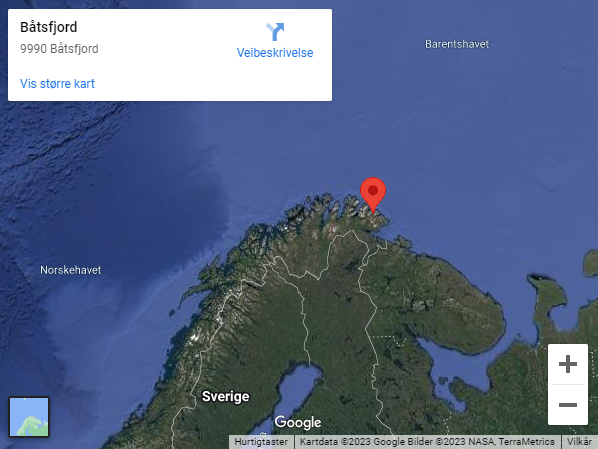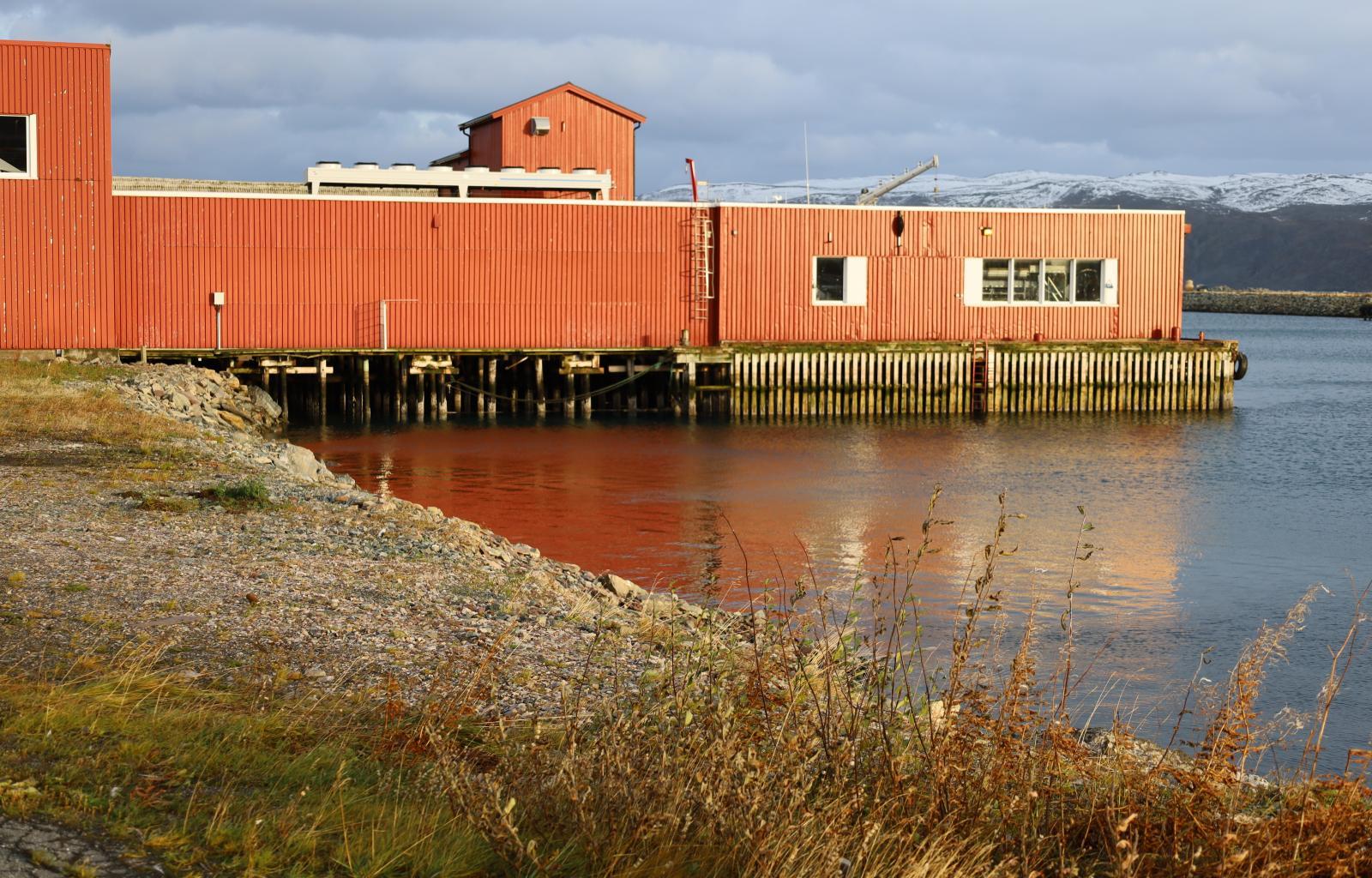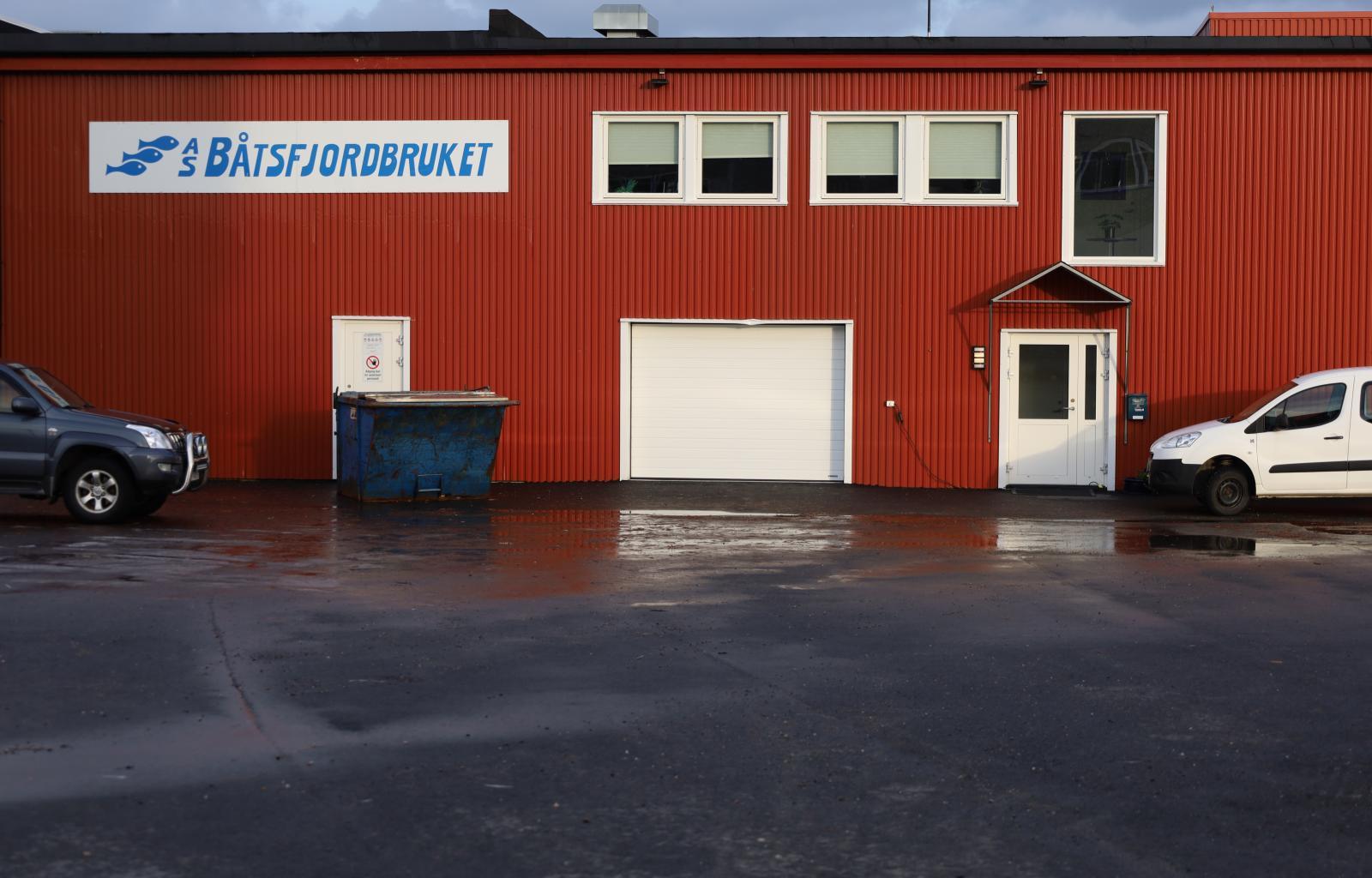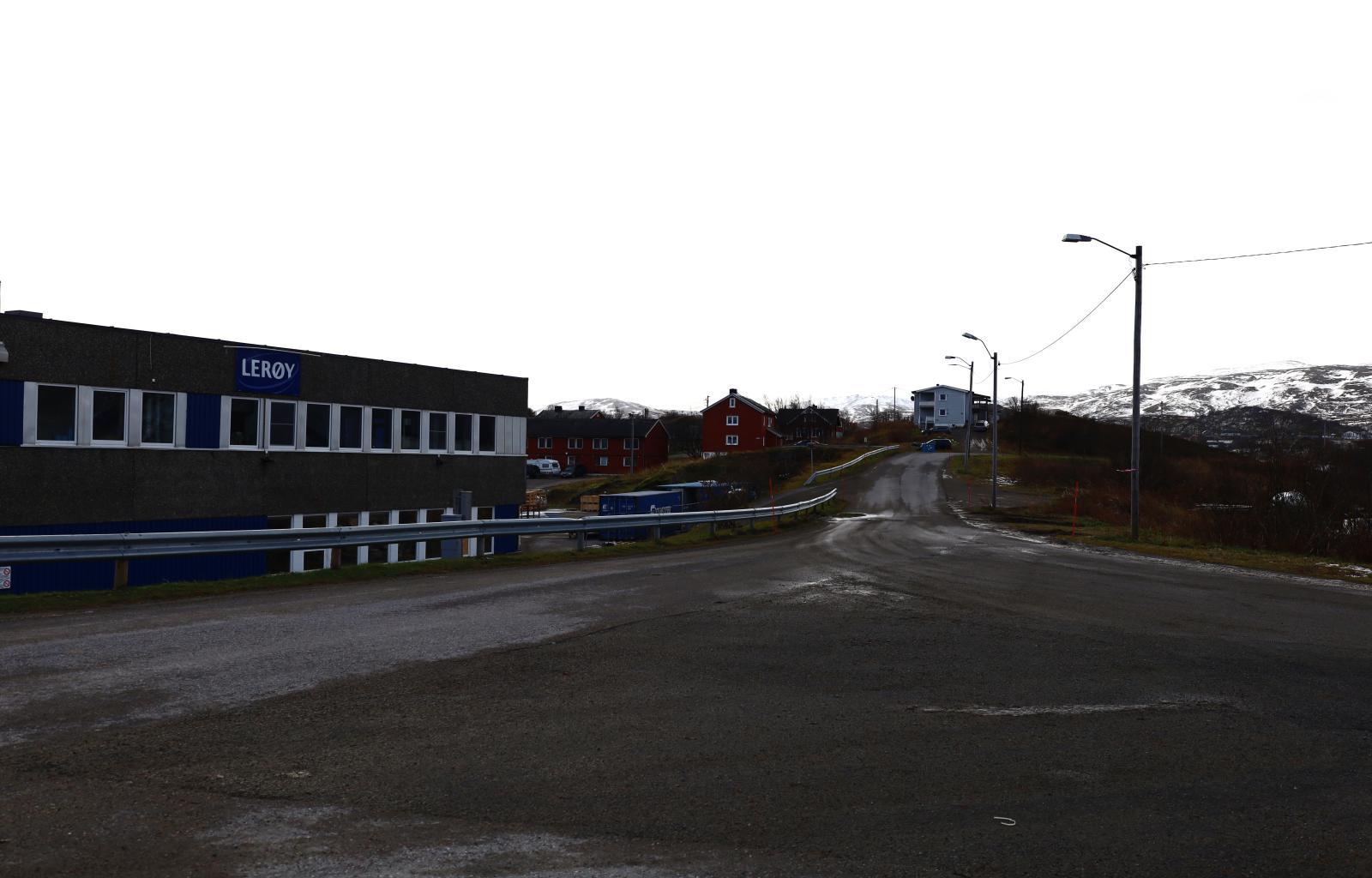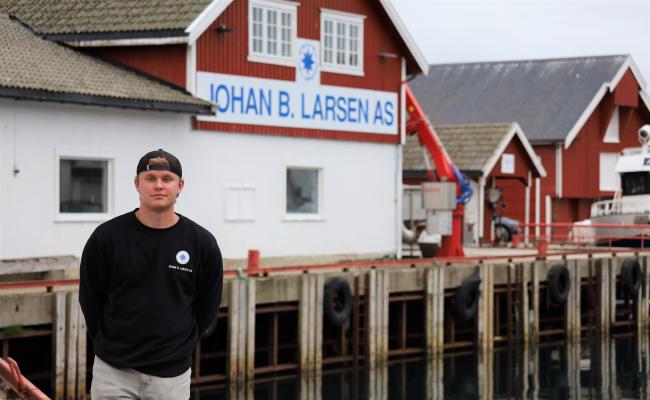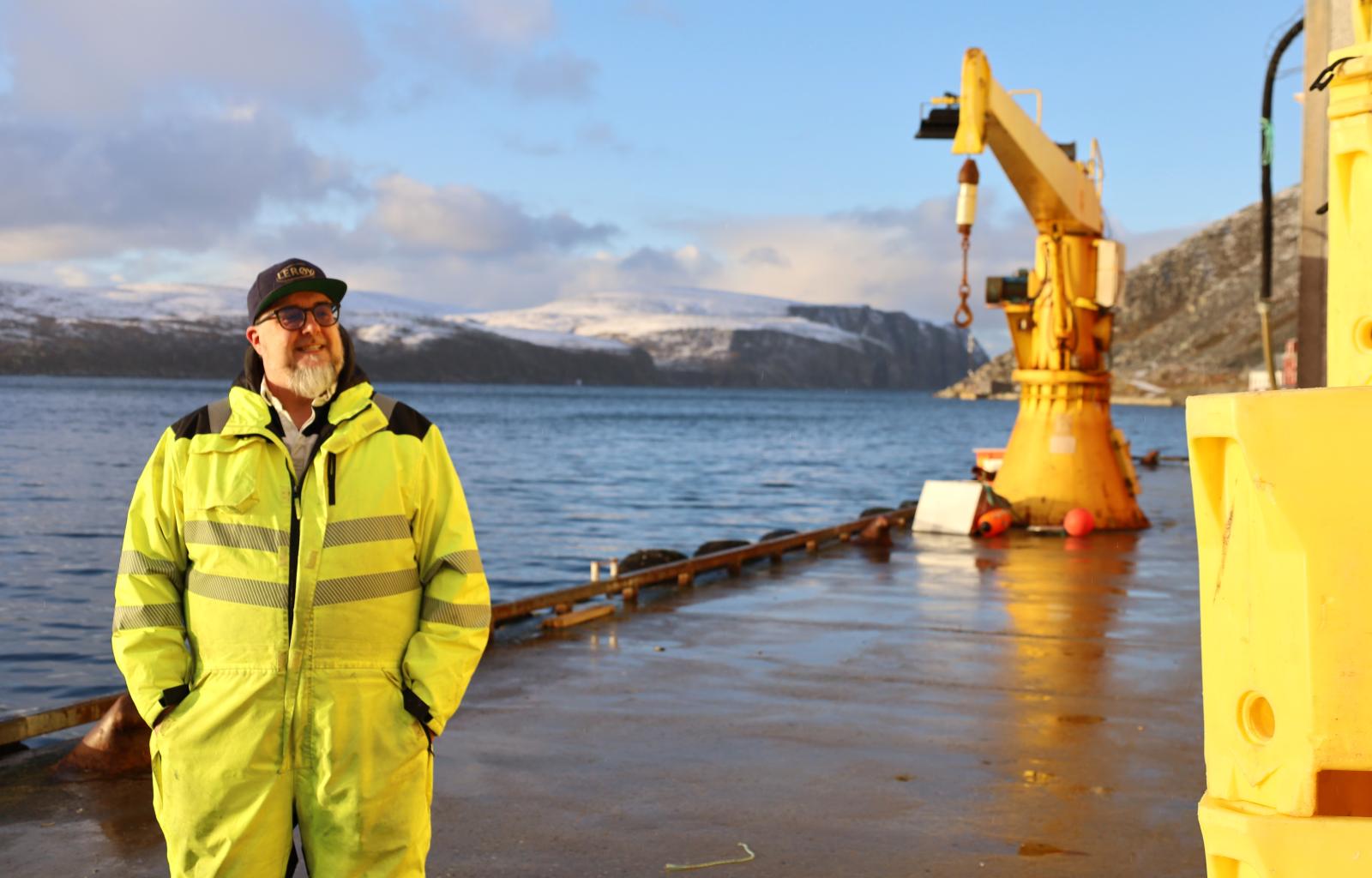Life on the Arctic Coast: Ørjan (53) Strives for the Fisheries in Båtsfjord
Båtsfjord (High North News): While several fish plants are struggling or closing down, Ørjan Nergaard from Båtsfjord in Northern Norway is about to establish a new fish producer. "We are a different community up here. We roll up our sleeves, do what it takes, and find solutions," he says about life in the "fishery capital".
Deputy chairman of Båtsfjord's fisheries group, chairman of the national cod cluster, former head of raw materials in Lerøy, and former harbor manager – and now – working to start up his own fish production.
There is no shortage of commitment to seas and fish in General Manager Ørjan Nergaard (53) at Patriot AS.
"I am a Båtsfjord resident through and through," he emphasizes.
We meet Ørjan in the Lagunen meeting room belonging to the Båtsfjord Handelsstands Fiskerigruppe (an interest group for the fishing industry in Båtsfjord and the surrounding area).
From the meeting room on the second floor there is a view of the harbor and snow-covered mountains.
The fishing village of Båtsfjord is located far north on the Varanger Peninsula in Eastern Finnmark in Northern Norway. The icy Barents Sea hits the cliffs on the other side of the fjord. Outside, the afternoon light is pink and blue, as it often is this time of year.
Ørjan has been part of the fishery group since 2001. But he has always worked with the ocean.
"I studied at the Norwegian College of Fishery Science in Tromsø before I moved back home and started working as a harbor manager with area responsibility of Båtsfjord and Vadsø," he says.
In 2012, Ørjan started working as the sourcing manager for the white fish sector in Norway Seafoods, one of the largest fisheries groups at the time. As sourcing manager in the group, Ørjan was responsible for purchasing white fish at the facilities in an area that stretches from Vardø in the northeast and all the way down to Lofoten.
When Lerøy carried out the major acquisition of Norway Seafoods in 2016, he was offered to move to Bergen but politely declined. Instead, he embarked on an idea he had carried for many years, namely to start up his own fishery company in Båtsfjord.
A new fish producer among the giants
"We want to start up a new whitefish producer. Not many people do that now. Many companies close down instead," says Ørjan.
The company is called Patriot, and Ørjan is the general manager. The company is primarily locally owned, with some external investors.
"We established the company a little over two years ago and are in the process of getting operations up and running, but there is a lot that needs to be done for a company that will reach 300 million in turnover. But we are getting closer and closer, believing this will succeed."
"And this is exactly what we are best at in Båtsfjord," he continues.
Båtsfjord is often referred to as the Fishing Capital. The municipality, with its 2,121 inhabitants, houses the country's two largest filleting factories in whitefish: Insula's "Båtsfjordbruket" and Lerøy's Båtsfjord department, among other things.
So far this year, Båtsfjord municipality has received 12 percent of all landings of fish in Region North (Troms and Finnmark). This corresponds to approximately 61,000 tonnes, according to figures from the Directorate of Fisheries. Senja is behind Båtsfjord, with 7.4 percent of the landings. In front of Båtsfjord is only Tromsø, with its 242,000 tonnes.
"The concept we have in Patriot is a little different to how everyone else does it," adds Ørjan.
"We think it will make operations better. The people on the team have many years of experience behind them and know the whitefish industry well. We have looked at what should not be done – as well as what successful people do – and "tweaked" ourselves into doing the smartest things."
More than just fish
In the fisheries group, there are approximately 20 members who do unpaid work for the business community in the region. The group was established back in 1946 and is a collection of actors in the fishing industry on the land side. Companies that are important to business and society in the municipality are also involved, such as Avinor, the Norwegian Maritime Authority, and Byggmakker (one of the leading home improvement brands in Norway). The latter also has a port agent.
"We also do a lot of work on infrastructure, especially regarding the new FOT routes. We will fight for these."
The FOT routes are government-funded flight routes that are put out on tender. The aim is to protect regional aviation infrastructure.
"The challenge we see now is that routes that we have worked for a long time to be put in place are being taken away. They can boast that they are cutting the flight prices in half in this round of tenders, but if you take away the flight routes, it is of little help," says Ørjan and continues with a comparison:
"We also have free trains in Finnmark. The only thing is that we do not have a railway."
"There is no doubt that it is a struggle to live far away from the central power. It has always been that way," he adds.
There is no doubt that it is a struggle to live far away from the central power.
The fishery group part of new high school
Ørjan describes Båtsfjord as a different community, with a mentality shaped by the old fishmongers, among others.
"We do not accept that things are taken away from us. We roll up our sleeves and sit down to find solutions. It has been that way for a long time," he says and refers to when there were no roads over the mountain.
"That is when the people of Båtsfjord started to build a road."
Such typical "Båtsfjord projects" also include the filet factories, the airport, the sports hall, and the private high school.
In 2002, two out of four filet factories in Båtsfjord closed down, and a total of 450 jobs were lost.
"The situation was dramatic. We arranged the "Just debt and misery" conference and had people from the outside come to look at how we could solve the situation. When we finished, we agreed that we would become even better at producing filet than we were. Not many years after, the two factories left produced as much as the four original ones did."
And you have a private high school?
"Yes, the old high school was shut down. The county wanted to gather the kids from the age of 15, and we think that it is too early to send them away. Then the kids would have to be sent to Kirkenes, Vadsø, Hammerfest, or Alta if we were to abide by the county," he says and continues:
"The thing is that there is a very high dropout rate in high schools in Finnmark. Naturally, since we send our kids 400-500 kilometers away."
"When we were left without a high school, we created it ourselves," says Ørjan, who is also the chairman of the school.
"The fishery group, Linken Næringshage, and Båtsfjord municipality owns Båtsfjord private high school, and we created it a few years ago. There are no dropouts there."
Year-round access to fish
The conversation moves back to fisheries – which are obviously closely intertwined with the Båtsfjord community.
Ørjan is also chairman of Cod Clusters, a national cod cluster with around 100 members. In addition to wild-caught cod, the cluster also focuses on cod farming, which he believes can be a stable footing to ensure year-round work with fish.
"Our aim is to build sustainable coastal communities."
So far, however, there is little cod farming in Finnmark. One of the great advantages of the fishery in this region is the year-round supply of cod, haddock, and pollock in particular – which also provides the basis for year-round work.
"We are very satisfied with the workforce we have here and have very few seasonal workers. In other parts of Northern Norway, staffing agencies are often used where 3-400 people come in and work during the season – and then leave again afterward," says Ørjan.
He adds that those who come to work in Båtsfjord most often become part of the local community.
"Of the population in Båtsfjord, around 29 percent are of foreign origin. But you rarely hear anyone here use the word foreigner. We say that you are a true Båtsfjord resident after a week."
"In the 70s, when I grew up, there were Finns in the fishing industry, then there were Tamil refugees in the 80s. At the time, around 150 Tamils worked in the fishing industry here. In the 90s, there were a lot of Swedes and Russians, and then Polish and Lithuanian workers came in the 2000s," he continues.
Now there are mostly Lithuanians in the Finnmark municipality – and this is the most successful integration Båtsfjord has had, according to Ørjan.
"They don't live in dormitories like in the 80s; they come here and buy a house, oftentimes a slightly older house, which they renovate. It is often young people who come, and many have children in the kindergarten and are involved in sports and politics," he says.
A true Båtfjord resident after a week.
The fishing industry in Båtsfjord is apparently going very well – do you see any challenges ahead?
"The situation is probably a bit complex. The catching part, i.e., the fishermen, are doing well. We see this in sales and new construction of boats."
"On the land side, there is a long way between the new buildings, with the exception of the large groups that spend a lot of money on production lines and buildings. Lerøy, for example, invests heavily here in Båtsfjord, Lofoten, and Kjøllefjord. That is impressive. Individual players on the land side of the fishing industry, especially the large companies, are doing well and have the capital to invest even in times of recession."
Ørjan adds that some producers are particularly struggling because of the high raw material prices.
However, the Båtsfjord resident believes that Finnmark will be a winner going forward. Among other things, he points out that several fishery companies from Nordland are establishing themselves in the region.
"I think climate change is much of the reason for that; that the fish move north to colder waters. The cod is spawning more and more up here, which has not always been the case."
"When we are now going to operate in the fishery industry in the future, I am very happy to live here in Finnmark," he concludes.
This article is part of High North News' series of reports on life on the Arctic coast. Feel free to share your tips with our journalist, Hilde Bye.
